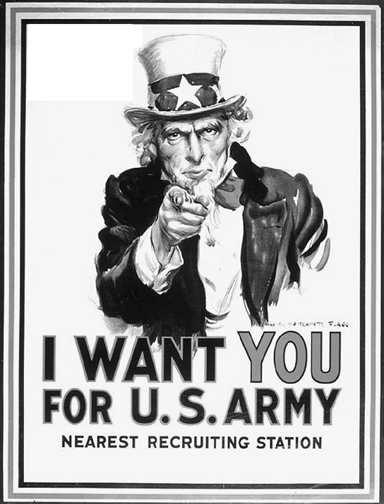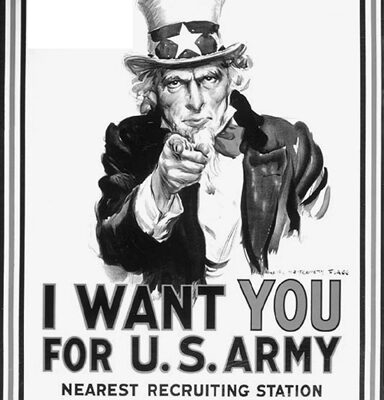The Selective Service Act was implemented during Woodrow Wilson's presidency in 1917 because the government wanted to ensure that the country’s military services had enough qualified men.
The new law resulted in many Americans being called for combat in World War I. When President Franklin Roosevelt signed the Selective Training and Service Act of 1940, the country had its first peacetime draft.

Some local residents likely recall registering for the draft at the local Selective Service System, Local Board #97 several years later when it was located in the Hamilton National Bank building at E. Main and Spring streets. The Clerk in charge was Walter Phlegar who used a manual typewriter to type the registrant’s card with his two index fingers. He and his wife, Mary, lived at the beautiful Montrose Court on Virginia Avenue.
The November 22, 1950 edition of Milligan College’s student publication, “The Stampede,” asked and answered the question of undeniable importance to draft eligible males: “How does the draft affect you, Mr. College Student?” That year, 219,771 men from around the country were drafted into military service.
The campus periodical answered the question by publishing guidelines for male students from bulletins issued by the Selective Service. Local boards established several conditions for deferment consideration, all of which had to be met.
The new law required men to register for the draft at his local board, defined as the one nearest his home, within five days after reaching their 18th birthday. However, a student already attending school such as Milligan was permitted to register with the board nearest the campus and request that they forward the paperwork to his home board.
Those who received a classification card had a Selective Service identification number on it, which was to be used in all correspondence with the board. A student was also required to keep his home board informed of any address change. The registrant must have completed at least one academic year of a full-time course of instruction at a college, university, or similar institution of learning.
The college or university was required to certify that the student’s scholastic standing at the college placed him among the upper half of his class. The consequence of poor grades dramatically highlighted the importance of maintaining good academic standing.
The local board received from the college verification that a student who desired to enroll in a full-time curriculum at the college did so prior to August 1, 1950 for the academic year ending in the spring of 1951. In the case of a registrant meeting the above conditions to whom an order to report for induction into military service had been issued, the local board was authorized to reopen the case for reconsideration.
The law further stated that any notice mailed from the board was considered “active” regardless of whether or not the registrant received it. The draft-eligible male also had to notify the board if he married after the registration date since that would change his classification. Anyone receiving an induction notice from his Selective Service Board could report immediately to another board and ask for a transfer from the board where the request of transfer was made. Persons born before August 31, 1922 (age 28 or older) were not required to keep their local board informed of any change of address; their records were placed in storage.
In 1973, the draft ended and the U.S. converted to an all-volunteer military, which continues to this day.
